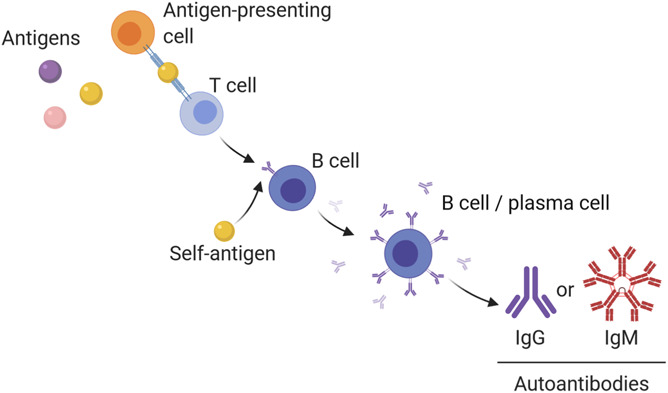Figure 2.

B-cell development and production of autoantibodies. Autoimmunity develops when a self-antigen breaks immunological tolerance. This process is believed to occur when antigen-presenting cells deliver self-antigen to naive T cells expressing self-reactive receptors, causing maturation into different T-cell classes: either CD8+ (cytotoxic or suppressor T cells) or CD4+ (helper T cells). Autoreactive helper T-cells clones then present self-antigen to autoreactive B cells; alternatively, some antigens may activate B cells without the help of T cells. On receptor recognition and in the presence of co-stimulatory signals, the B cell will differentiate into a plasma cell and begin secreting antibodies that recognize the self-antigen. In the context of pain, there is evidence that both IgG and IgM can influence nociceptor activity. This can occur by binding to their antigen, activating the complement system, or signaling at their respective Fc receptors. IgG, immunoglobulin G; IgM, immunoglobulin M.
